Whenever you create art, there is element of letting go. You can’t control the viewer’s response or interpretation and after you make it, you have to release it. For Jason deCaires Taylor, this letting takes a more extreme form. Much of his work, placed underwater, is designed to interact with and change as the ocean and its inhabitants act upon it. As deCaires Taylor says,
“...as soon as we submerge the sculptures, they’re not ours anymore. As soon as we sink them—the sculptures belong to the sea." [1]
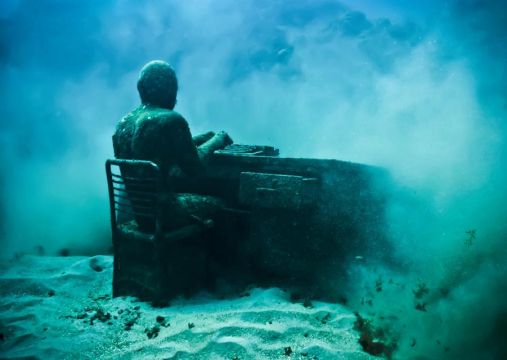
What happens to those sculptures as they rest on the bottom of the ocean floor is a fascinating part of the process, for they don't and aren't intended to remain as they were when lowered by cranes onto the floor of the sea. They are intended to become habitat—habitat for fish, kelp, algae, plankton and, most importantly and deliberately, habitat for coral.
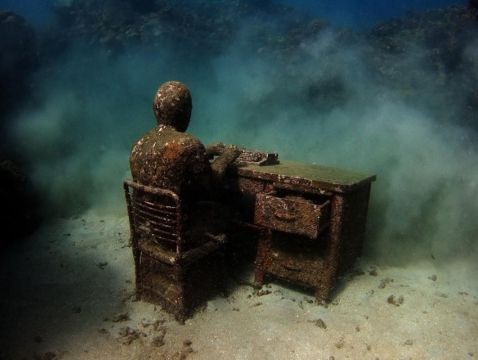
As deCaires Taylor says, “I realized that I could make art that had a secondary purpose, that was functional and could also tell stories and at the end of the day, whether you like the art or not, it actually served a practical purpose.”
Which is how he has been spending much of his time for the last 15 years. After making the world's first underwater sculpture park off the coast of Grenada (which was labeled one of the 25 Wonders of the World by National Geographic and encouraged Grenada to turn the surrounding waters into a natural reserve), he has been making his art and then sinking much of it beneath the waves ever since.
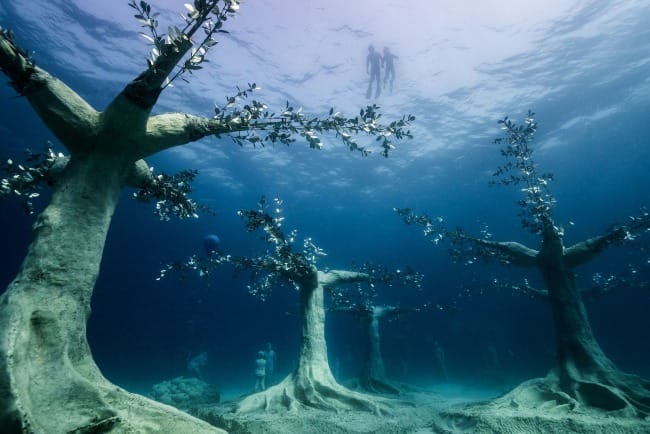
His methods are careful and deliberate. He uses non-toxic, pH-neutral cement to avoid adverse effects on the environment; he makes casts of local people to make the sculpture site-specific and then he adds textures to the surfaces so that creatures can attach themselves to the sculpture's surfaces.

He places much of his work near vulnerable and over-visited sites to intentionally draw tourists away from those places and toward the artificial reefs that his sculptures create, choosing spots with bare, sandy surfaces and minimal existing marine life. Often the sites are located down current from areas where coral spawn in order to provide landing places for the spores that are released. As of July, 132 corals had been planted in the Greenhouse, his Australian installation in the Great Barrier Reef, and all of those were surviving, with several others implanting themselves naturally. Fish abundance and diversity had also increased significantly. [2]
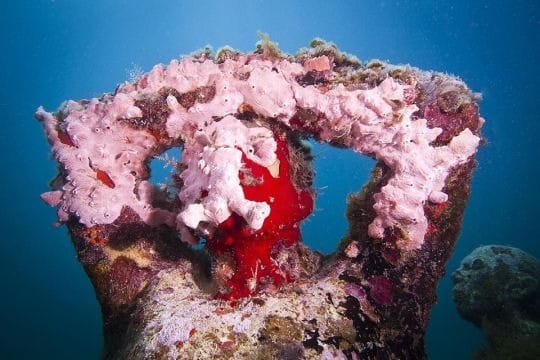
Once the sculptures are lowered, nature takes over.
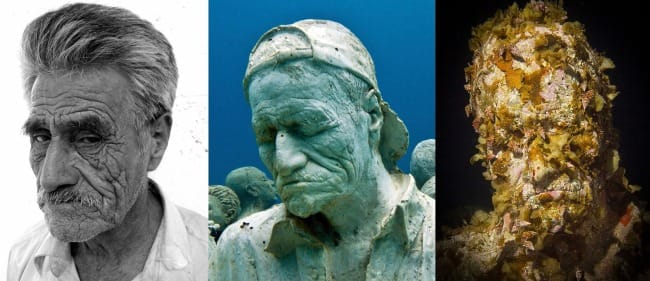
I'm not sure what it would be like to see your likeness being colonized by worms, algae, coral, and other creatures, but it does bring home deCaires Taylor's point that humans are part of nature, not distinct from it.
"We're part of the environment where we're dependent on each other for our ultimate survival, this symbiotic relationship."
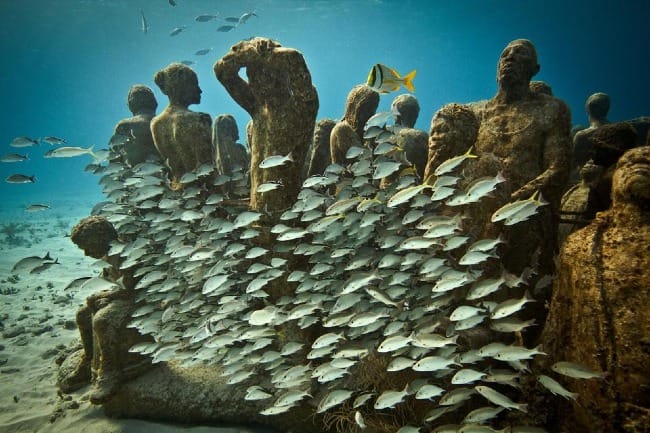
It also shows how humans can have a positive role in the environment. Both aesthetically and practically, his sculptures demonstrate the possibility of humans living in harmony with the other parts of nature and having an actual beneficial effect if they choose to as an alternative to the solution being the elimination of humans from the equation.
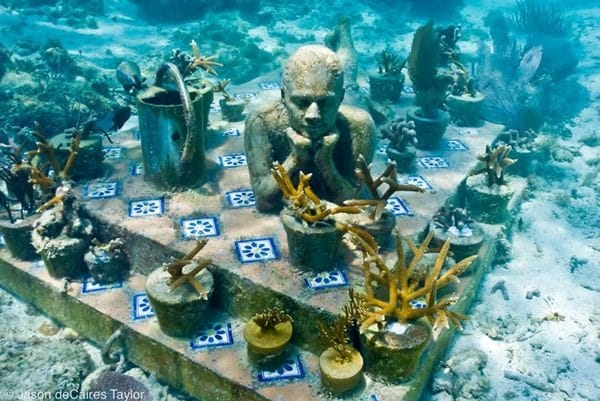
The sculpture parks, located in Cyprus, Bahamas, Norway, and Australia, to name a few, are often called "museums" by deCaires Taylor. He calls them this because he sees museums as places where we keep things we value, places of preservation, conservation, and education and this is what he wants to promote. The items of value in the underwater museum aren't the sculptures themselves as much as the ocean life they nurture and highlight; this is what he wants people to recognize and value.
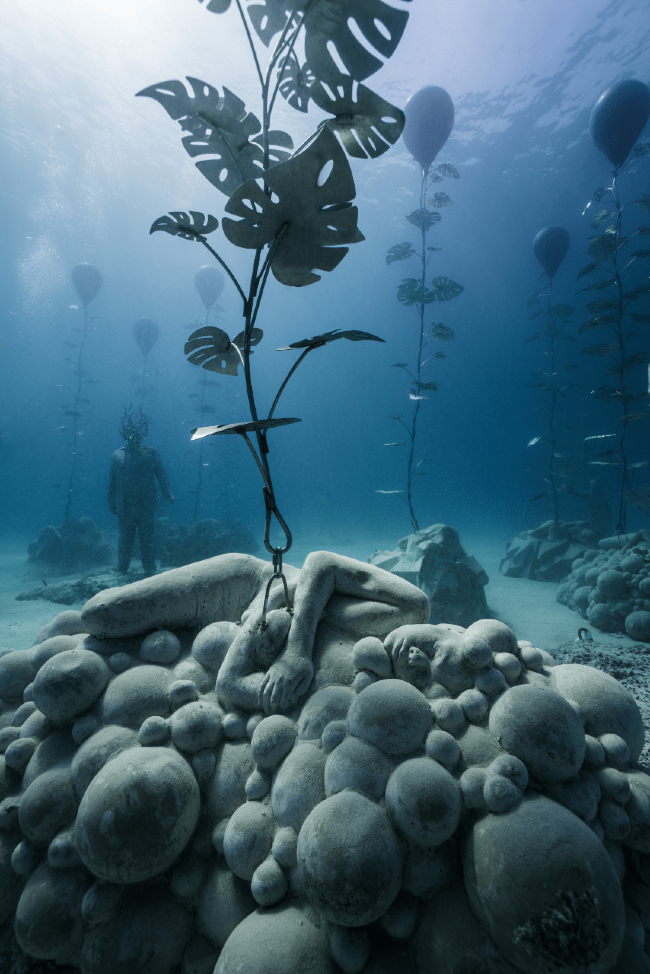
DeCaires Taylor, the son of a British father and Guyanese mother, spent his childhood exploring the reefs around Malaysia and, as a fully qualified scuba instructor, knows the ocean intimately. But, he believes most people see only the surface of the sea, not thinking of the life beneath the surface, or perhaps fearing it. DeCaires Taylor wants to change that through his underwater museums. To foster accessibility, they are usually placed in shallow water and he has made some tidal installations which people can see from the shore, requiring no diving at all to view.
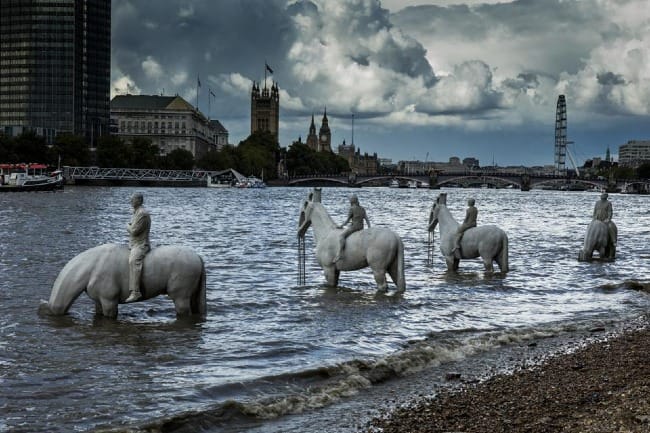
These, too, however, remain artistically and physically dependent upon the ocean for their meaning and presence. One of these, an installation of four horses and riders, is situated across the river from the Parliament on the Thames River. The horses, with oil wells for heads, carry two suited, older riders—suggesting the ways the older generation has failed to address urgent issues such as climate change, and two younger riders—who hint at the hope of a generation which may respond more actively to these challenges. The sculptures serve as a rebuke and a warning to those working across the river, encouraging them to stop "the rising tide" while it is still possible.
Reflection Questions: Is there are part of the world you think people too often overlook? What can you do, in your work or at home, to bring people's attention to that? Where have you seen positive interaction between humans and the rest of creation recently?
Feel free to contact me directly at info@circlewood.online
Louise
To learn more about Jason deCaires Taylor and see more of his work, visit his website.
